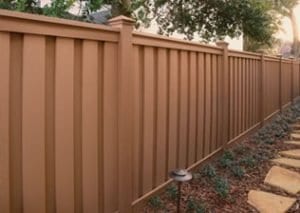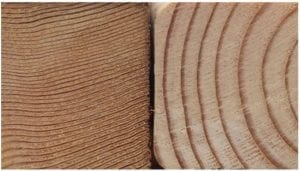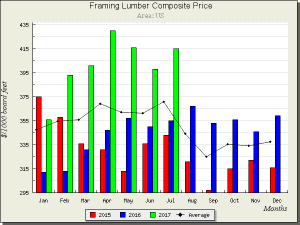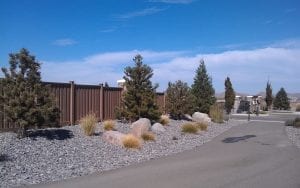
Composite Fencing & The Future Of The Wood Industry
by FDS Admin | Sep 19, 2017 | Eco-Friendly, Materials, Product Comparison, Wood-Alternative Fencing

Benefits of Composite Fencing
Composite lumber is increasingly popular for fence and deck construction. Composites are a mixture of organic fiber, plastic, and a binding agent. The most common reason people invest in composites for building materials is convenience. Composite fencing is an industry innovation that addresses broader issues with wood fencing. In this article we’ll explore four of the issues composite fencing solves.
New-Growth Wood Problems
Most of the fencing we use today comes from younger trees since available supplies from virgin forests are used up or protected. Originally we would get the trees from old growth forests. The trees in these forests grew slowly over a period of many decades or centuries. As a consequence the rings from these trees are denser, which give them a much harder structure and resistant to rot than new growth trees. Today we farm most of the trees we use and cut them down in a period that could last as little as 10 years. The end product is notably different:

The wood from new growth trees has less density and is consequently much softer and structurally weaker. Composite fencing solves this problem by being able to tightly compact wood fibers to make a product that is denser than the new growth wood. This makes the material and the whole structure much stronger. Another added benefit from composite fencing is the ability to create custom configurations. For example, Trex Fencing uses an interlocking picket that would be not possible with regular wood. These specially engineered pickets prevent the fence from sagging, warping or splitting; which can become problematic with wood.
Injecting wood with preservatives only solves a small part of the durability problem. Wood fencing receives some benefit from this process, but the lack of density from new wood growth prevents the structure from lasting as long as it once did. This issue is corrected with composite fencing by increasing the density of the board and engineering more stable components.

Rising Cost of Wood
Not only is the quality of the new growth wood lower than it used to be, which will reduce the life expectancy of a fence, but its price is increasing drastically. According to the National Association of Home Builders the price of framing lumber has nearly doubled in the last five years. The simple explanation for this is increased demand for the wood while supplies are dwindling. The fact that it can take up to one or two decades to grow a tree and demand for wood continues to rise will only accelerate this process.
Another reason for the dwindling suppliers will come from forest fires. As I’ll explain in the next section, these fires will become more common, further dwindling the wood supplies and therefore rising prices.
Other factors such as the new 20-24% import tax for Canadian lumber may also affect prices. The National Association of Home Builders claims this tax will affect end consumers. However, the U.S. Lumber Coalition claims that most of the costs will be absorbed by Canadian suppliers. But despite these back and forth arguments, the historical data indicates that lumber prices are going up, and there’s no indication that this trend is stopping.
Since composite fencing products like Trex use recycled lumber, (sawdust and other remnants) the density of the growth doesn’t affect its quality. Additionally, Trex is recycling left over wood products that might otherwise be wasted.

Forest Fires Strain Supply
It has been a busy decade for forest fires. The west coast has experienced a prolonged period of drought. The ecosystems of the Western United States and Canada have evolved to be especially adaptive for low intensity and periodic forest fires. But our success in the past 50 years in preventing and quickly extinguishing these fires has caused a massive buildup of combustible materials that in the past would periodically be eliminated by smaller fires. This buildup causes high intensity fires that are very difficult to manage, and now destroy most of the trees that once survived the smaller periodic fires.

Conclusion
Wood-plastic composites are the clear alternative to wood lumber. They are a sustainable choice that have minimal impact on the environment and last longer than wood. As wood supplies decrease the cost of replacing existing wood fences will be much greater than when they were first built.

